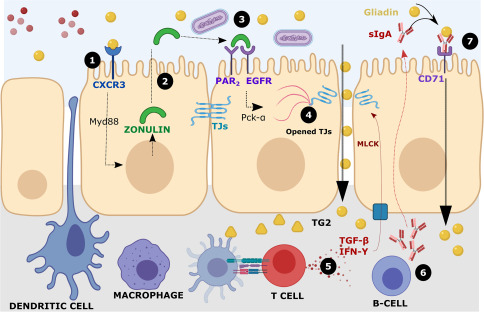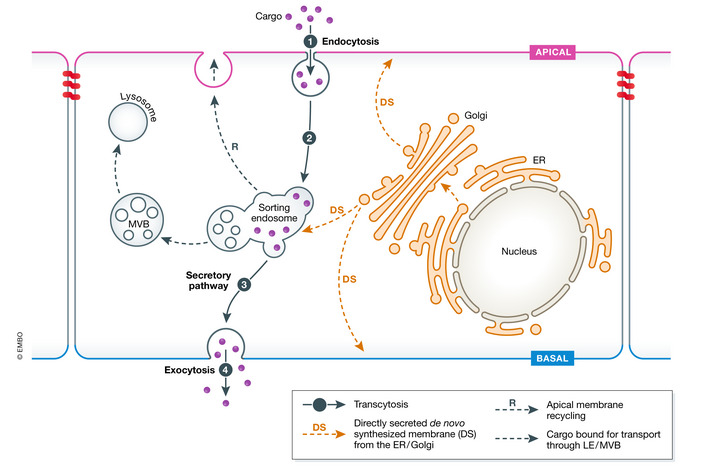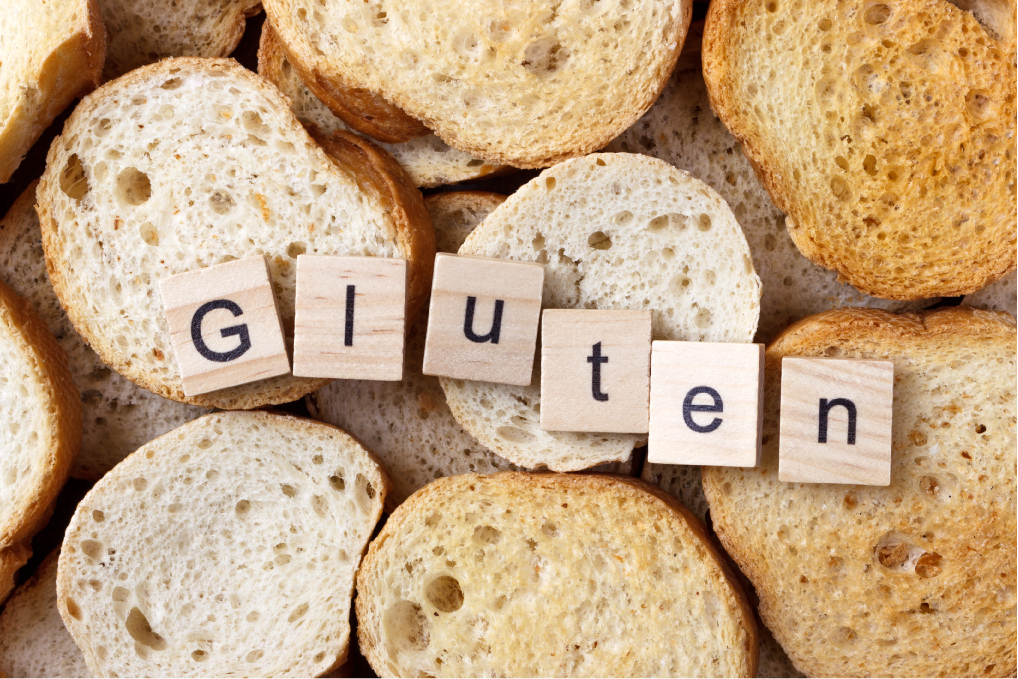lately at the last few years the awareness of the important of healthy eating pattern had been rising continuously. that’s cause a change in population eating habits and food selection. some people with insulin resistance choose to fallow keto and low carb diet to reduce their weights and reverse insulin resistance and diabetes . while healthy other people chose to cut off proceed food that have artificial additives and high processing. both group chose to quit eating weight bread, flour, and pastries. and take other alternatives such as gluten free , whole grain, low carb alternative pastries. in this article the discussion of why people are avoiding gluten and whole wheat grains as a part of a healthy lifestyle choice.
Abstract
gluten is the primary type of protein exists in wheat and baked products. it effect on human health is under controversy. as it’s role in triggering and increasing the severity pf Celiac disease is well-established. which increased the interest into the study of gluten protein characteristics and it relationship with human gut, microbiome, and immunity health.(1)
Because gluten is related of coeliac disease, non-celiac gluten sensitivity. wheat allergy, gluten ataxia, dermatitis herpetiformis, and other gluten related disorders. a lot of people chose to avoid wheat and wheat products . (2)
What is gluten?
Gluten is the main wheat protein which is a rubbery mass that remains after dough is gently washed to remove starch particles . as will as water-soluble constituent. the rubbery remaining material contains 75–85% protein and 5–10% lipids. in general gluten is the protein that give dough its baking quality of wheat. which give wheat dough its absorption capacity, cohesively, viscosity and elasticity. (3)
Gluten is the why protein is stored in grains. is consists of Prolamins and Glutelins which is stored together with starch. gluten can be found t is found in wheat, barley, rye, oat, and hybrids (such as spelled, Khorasan, emmer. gluten is not restricted to bread and pastries. it is very high in bread and reach 80% of its protein content. but it is added to different food products such as cold cuts meats, soy sauce, ice creams, and ketchup to help in stabilizing this products.(4)
Gluten is a complex protein. that’s contains hundreds of monomers proteins or linked together by interchain disulphide bonds, polymers. and oligo-. gluten have high content of glutamine and prolines as well as its low contents of side group charged amino acids. (3)
Gluten proteins can be diferentiated according to their solubility in alcohols. it divided to gliadins which are soluble and the insoluble Glutenins.
Gliadins is a Prolamins that is found in cereal grains. gliadins is less complex than Glutenin polymers. gliadins are monomeric proteins which are classified into three groups: α/β-gliadins, γ-gliadins, and ω-gliadins. Gliadins acts as lubricant in dough and allow deformation and stretching. gliadin is conceded to be more toxic fraction of gluten component and trigger immune response.
Toxicity from Gliadin means the ability to induce mucosal disruption and damage in vivo or in virto. (5)
Gluten toxicity
when consuming wheat, the digestive system will have to increase stomach acid to digest wheat protein that have about 80% of it from gluten. unfortunately gliadin is heat, acid, alcohol, and digestive enzyme resistance. do gliadin can reach to CXCR3 receptor. which cause a series of cascade reactions that induce the production of Zonulin protein inside intestinal lumina. Zonulin binds epidermal growth factor receptor (EGFR) in IECs through direct binding and/or through protease activated receptor 2 (PAR2) transactivation. this activate membrane-associated PKC-α, in which cause the change in the Tight Junction complex protein cytoskeleton subsequent. this means loos Tight Junction and more permeability. (12)
the new induced permeability allow the undigestible Gliadin as will as other lectins and bacteria to go throw epithelial cell barrier to lamina. this entrance of foreign particles will stimulate microphages and T cell which Simultaneously, T killer cells to initiate intestinal epithelial cells apoptosis IECs. this will induce the expression of CD71 transporter at apical side of enterocytes. which will increase the permeability of the intestine for gliadin to luminal space. (12)

What is Wheat germ agglutinin (WGA)?
wheat germ is the part that is responsible of the plant development. it is the seed embryo. it is accounting for 2.5-3.5% of the total wheat kernel weight. it is usually a by product of the wheat milling, in the process of refining flour. refine white flour contains the starch reach low fat endosperm, while the fatty nutritious germ is removed. the removal of the germ is the unfavorable baking properties because of fast rancidity and oxidation of its oil content. (6)
although it seems that the germ is beneficial with it’s high nutritional content. such as protein 35%, sugar 17%, lipid 15%, as will as fiber 4.5%, minerals 4% and other bioactive compounds: tocopherols (300–740 mg/kg dry matter), phytosterols (24–50 mg/kg), policosanols (10 mg/kg), carotenoids (4–38 mg/kg), thiamin (15–23 mg/kg), and riboflavin (6–10 mg/kg) (Brandolini and Hidalgo, 2012). it also have a main intestinal disrupter and anti-nutrient lectin called Wheat germ agglutinin.

what is agglutinin
An agglutinin is a causes particles to coagulate and aggregate and thicken fluid to a solid state. agglutinin is used in the immune system as an antibody which binds with antigens and foreign particles. when agglutinin binds sugar to protein, then it is called a lectin. (8)
Lectins/agglutinins are carbohydrate-binding proteins that are found in animals, plants, and microorganisms. in animals they regulate blood protein level, glycoprotein synthesis, cell adhesion. as well as its role innate immunity. (8)
but in plants lectin plays role in the resistance against insects pests and protect the fruit from viruse, bacteria, fungi, insects, and prominent animals by it’s toxicity, that cause the death of them. (7)
effect of lectin on intestines
when you eat high lectin food, the undigested lectins which manage to penetrate the intestinal barriers can have devastating consequences. because gut bacteria and epithelial cells have receptors for different lectins. lectins can bind to gut bacteria, gut epithelial cells, or both. epithelial cells is inflamed if lectin is bonded to it. which can cause damage to the tight junctions, and leaky gut, which can lead to autoimmune diseases. (8)
lipopolysaccharides (LPS) is an endotoxin that is induced to be released when Dietary lectins are consumed. (LPS) increases gut permeability, which open the door for the entrance of lectins, food antigens, and bacterial toxins into the circulatory system. (8)
moreover a lot of human tissues have molecules acts as lectin receptors. Lectins can bind to these receptors which can lead to autoimmune disease with antibodies attacking diverse group of multiple target tissues, such as which includes connective tissue, the liver, pancreas, thyroid, cardiac muscle, prostrate, breast, and brain. The binding of lectins to organ tissue antigens can activate immune cellular and humoral responses against lectins and the tissues that is bonded to the lectin. (8)
so what is Wheat germ agglutinin
when you chose better alternative to refined bread to whole grain bread and flour, you will be exposed to plant based glycoprotein or lectin. which is named Wheat germ agglutinin(WGA). according to David killilea, et all. work WGA is an indication to measure the quality of whole grain products.
WGA levels are strongly related to whole grain content. so adding refined flour to the whole grain mix will reduce WGA. in there study Killlea and his team found that commercial whole grain flour has 40% WGA than it is content in standard patch mix. (9)
but is it good or not to have whole grains? to answer this question lets discuss WGA.
Wheat germ agglutinin (WGA) is a plant protein binds specifically to sugars in human gastrointestinal epithelial and immune cells. it is a toxic compound and an anti- nutrient. the Exposure to micromolar concentrations range of WGA have a toxic effect on normal epithelial cells cause harmfulness of the integrity of the epithelium layer and increase its permeability to both mannitol and dextran. besides that a nanomolar concentrations of WGA stimulates the synthesis of pro- inflammatory cytokines, which cause the biological activity on the immune system at the gastrointestinal interface. (10)
how do Wheat germ agglutinin effect intestine permeabilty and immunity
WGA and Intestinal Permeability
After eating wheat germ agglutinin, 0.1% of it could cross the intestinal barrier by means of transcytosis . which means that it can reach the basolateral membrane, lumina and reaches the sub-epithelium small blood vessels. so WGA do not need for tight junction destruction in order to overcome intestine epithelial cell barrier. (13)
there three other different why’s that WGA can be phagocytosed. first one is after its glycoprotein binding to non-receptor glycocalyx on cell membrane surface. moreover WGA can also be endocytosed by the use of antigen sampling M-cells or by the attachment to epidermal growth factor receptors at the enterocytes . Another possible route is the paracellular transport. in which lectin can entry into the periphery from point with loose tight junctions. with the help of Gliadins how induce the production of Zonulin when gliadins bined to CXR2 receptor. in which Zonulin destroy cell to cell tight junctions. (13)

the passage of WGA through epithelial layer impairs its integrity. and allow for other small glycoprotein such as lectins to pass the epithelial layer. foreign WGA stimulates the immune cells in the basolateral side to secret pro-inflammatory cytokines. the existence of gliadin and its effect on increasing permeability increase the immune system to dietary antigens interaction. which increase the possibility of developing autoimmune diseases.(13)
more over Human data shows the existence and detection of antibodies to WGA in health individuals serum. and higher levels of WGA antibodies in Celiac disease patient. (13)
Other environmental factors increases intestinal permeability

smoking and traffic exhaust and pollution
Cigarette smoke was shown to damage the intestinal barrier in mice,making it more permeable to bacteria. This raises the possibility that smoke-driven alterations in gut microbes could contribute more significantly to Crohn’s disease (CD). (19)
exposure to food additives
emulsifiers Polyethylene glycol PEG increase permeability
Polyethylene glycol (PEG) is a versatile, water-soluble polymer used in everything from medicine and cosmetics to food and industry. Its safety and ability to improve product stability make it popular, but some potential downsides like mild side effects exist.
recent studies shows that PEG can increase intestinal permeability as will as inhibiting the drug efflux transporters and drug-metabolizing enzymes.
more over studies shows that after oral administration, PEG reaches to the large intestine as part of PEG is absorbed by the small intestine, and the remaining unabsorbed portion. PEG utilizes carbon source by several bacterial species. whit effect of the abundance of gut bacteria in the large intestine. (15)
Polysorbate 80 (E433) in cream
Polysorbate 80 is commonly used in the food industry. it is used as an emulsifier, stabilizer, and thickening agent to help in keeping integrity of food component and to prevent from separating. and also to improve texture, as well as help to create a creamy consistency. that’s why It is used in ice cream production, and salad dressings preparation.
small intestine is negatively effected by Polysorbate 80. when ingested in low concentration it induced dysbiosis in the small intestine, which leads to the vulnerability of the small intestine. then induce intestine injury. (14)
Titanium dioxide in chewing gum E171
Titanium dioxide is one of the most used food pigments in food industry , an odorless powder that is used to enhance white color or opacity of foods. so it is used in the production of coffee creamers, candies, and toothpaste.
som studies demonstrate that short-term exposure to TiO2 NPs (oral administration 1 mg/kg/day for 7 days) led to an increase of Ti levels in the blood and intestinal tissue in adult male mice. They also cause observed damage to large intestine epithelium, reduced integrity of tight junction. as will as reduces thickness of the mucous layer in the intestine. (17)
BPA plastic exposure

Bisphenol A (BPA) is commonly used in manufacturing plastics. therefore, it is presented in everyday objects including household goods, office supplies, car equipment, toys, and thermal paper. food and beverage in contact with plastic is The most dangerous among these are goods containing BPA. because it enable the BPA and plastic components to contact intestines walls. (18)
the stomach and intestine are especially vulnerable to BPA. and the adverse effects of this substance, is its ability to damage the intestinal barrier function and may change the central nervous system (CNS) and peripheral nervous system (PNS) processing of noxious stimuli in the gastrointestinal tract. Moreover, BPA promotes inflammation in the stomach and intestine.(18)
pesticides
According to recent studies on glyphosate (popular pesticide used on wheat cultivation) have a strong impact on bacterial diversity in human microbiome. as about 54% of human gut bacterial species are sensitive to glyphosate. (20)
Relationship between autoimmune diseases and gluten consumption
there are a lot of connections that increasing the consumption on wheat and gluten increase the risk in autoimmune diseases. such as type 1 diabetes.
Type 1 diabetes mellitus has a connection to gluten or celiac disease. as shared genes coexistence of both TID and celiac disease patients. that’s why there are an increase prevalence of celiac disease in patients with T1D. as well as increased selective T-cell. (24)
Gluten intake by the child at age 18 months and subsequent risk of type 1 diabetes
children how take high amount of gluten was significantly associated with higher risk of type 1 diabetes. the studies show that For each 10-g/day increase of gluten intake. the aHR was 1.46 (95% CI 1.06–2.01, p = 0.02). For each standard deviation (3.6 g/day) increase of gluten intake, the aHR was 1.15 (95% CI 1.02–1.29, p = 0.02). (23)
Conclusion
gut permeability is an important tole to protect the body from undigested proteins and lectins as will as bacteria and other allergens. the modern life style and environmental and toxin stress. reduce the ability of the intestine to overcome invasive particles such as gluten or WGA.
bread and wheat products have to main undigested toxic glycoproteins. such as gliadins, and wheat germ agglutinin. and this proteins is well studied to cause intestinal permeability and immune system activation.
so there are a lot of risk factors that leads to gluten sensitivity and autoimmune disease. which includes the consumption of wheat products.
sources
(1) What Is Gluten—Why Is It Special?
(2) Gluten-Associated Medical Problems
(3) Chemistry of gluten proteins
(4) Gluten-Associated Medical Problems
(5) The immune recognition of gluten in coeliac disease
(7) Plant as a plenteous reserve of lectin
(8) Reaction of Lectin-Specific Antibody with Human Tissue: Possible Contributions to Autoimmunity
(9) Wheat germ agglutinin is a biomarker of whole grain content in wheat flour and pasta
(11) Chapter Four – The tight junction and the epithelial barrier in coeliac disease
(12) The tight junction and the epithelial barrier in coeliac disease
(13) The Dietary Intake of Wheat and other Cereal Grains and Their Role in Inflammation
(16) Titanium dioxide in our everyday life; is it safe?
(17) A review of research on the impact of E171/TiO2 NPs on the digestive tract
(20) Chronic Effects of Dietary Pesticides on the Gut Microbiome and Neurodevelopment
(22) Helicobacter pylori Infection Increases Mucosal Permeability of the Stomach and Intestine



